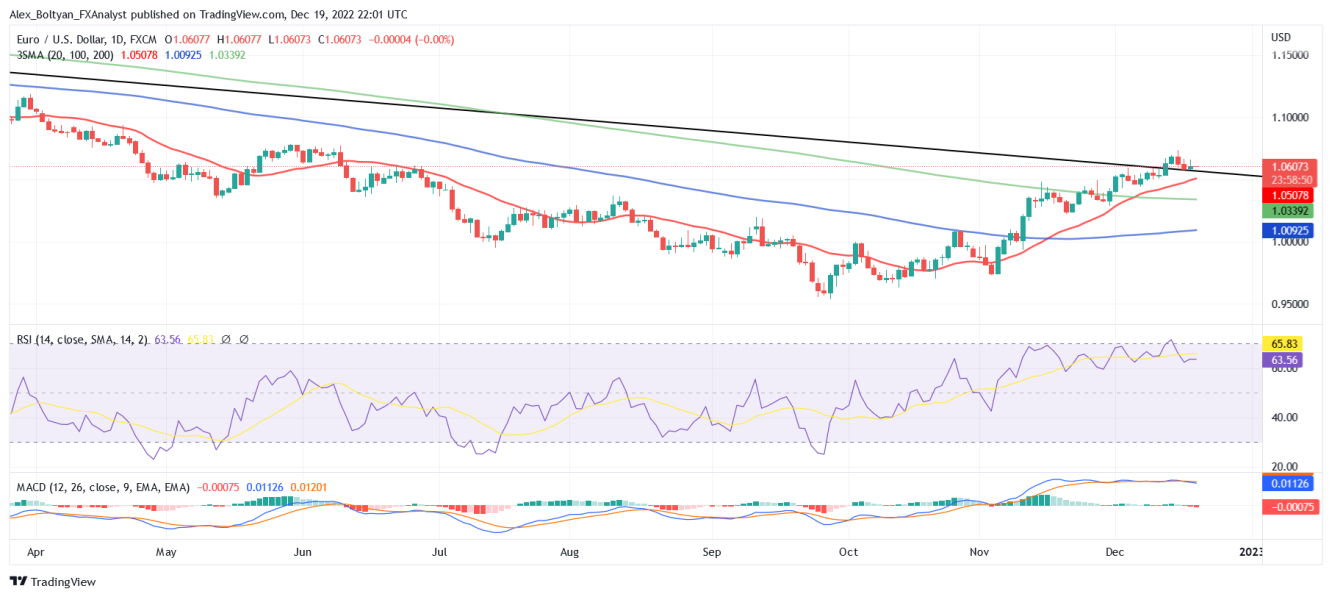The EUR/USD pair started the week on a positive note fueled by better-than-expected German data, although it trimmed gains during the New York session. At the time of writing, the shared currency trades at 1.0610, 0.2% higher on the day after peaking at a daily high of 1.0658 earlier in the session.
The German IFO data showed an optimistic economic outlook. The Business Climate Index came in at 88.6 in December, above the market consensus of 87.2, while the Current Assessment indicator also beat the expectations at 94.4 versus the 93.5 expected. Likewise, the Expectations index jumped to 83.2, above the 82 foreseen by analysts.
On the other hand, the greenback traded soft as markets are still pondering the recent FOMC decision. The terminal rate discounted by the swaps market has fallen back to just below 5.0%, while the WIRP tool suggests that a 50 bps hike in February is only 33% priced in, followed by a 25 bps hike either in March or May.
Meanwhile, European Central Bank vice-President Luis de Guindos said the bank will continue raising rates to combat inflation.
"There will be more interest rate hikes, until when, I don't know. I am absolutely honest, I don't know," De Guindos said.

From a technical standpoint and according to the daily chart, the EUR/USD pair holds a short-term bullish perspective. However, there are some signs of dwindling momentum coming from indicators, which suggests that the pair may enter a consolidation phase.
Still, the EUR/USD pair remains above a broken descending trendline drawn from May 2021 highs, which supports the bullish case.
On the upside, the EUR/USD next resistance could be found at daily highs around 1.0660, followed by last week's highs just below the 1.0700 mark. On the other hand, short-term supports are seen at the mentioned trendline at around 1.0570, the 20-day SMA at 1.0490, and the 1.0400 level.
